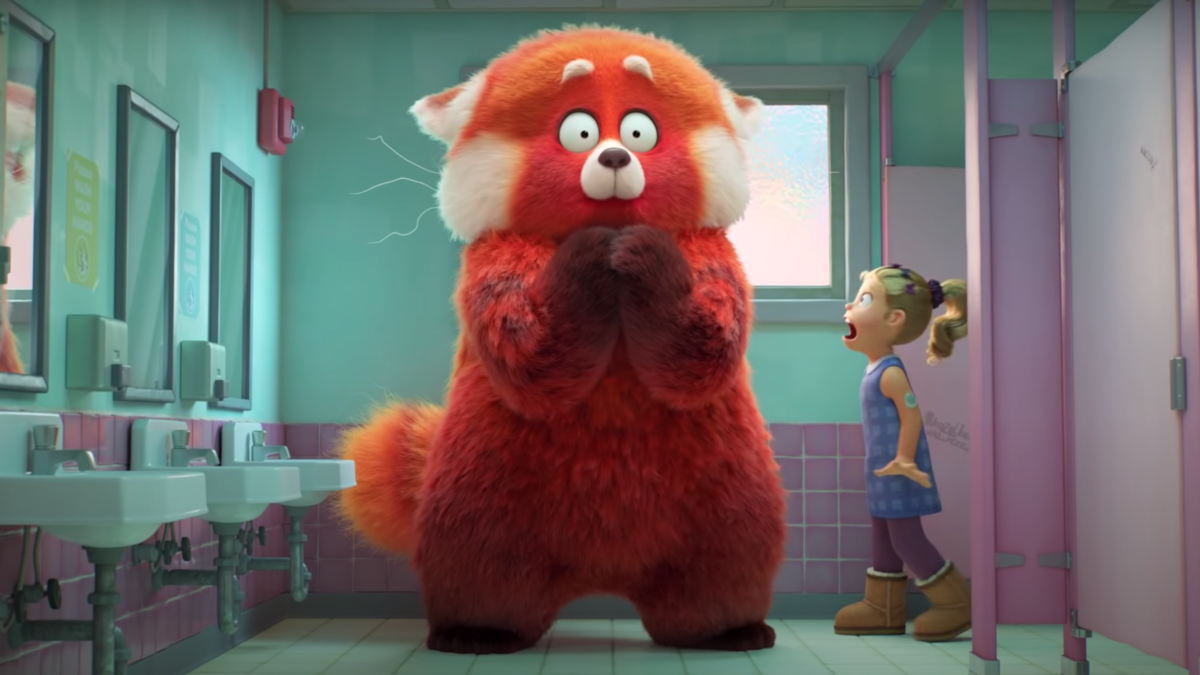“Turning Red,” the latest project from Pixar, landed with a lifeless thud on Disney Plus over the weekend. It is as astonishing in its sincerity as it is stupefying.
Disney executives greenlit a half-baked explicit allegory about the female menstrual cycle and the difficulties of puberty. Think of a much less subtle version of “Teen Wolf,” but about a girl who turns into a giant red panda. An incompetent film that inflates old sexist beliefs while not even getting its cool fantasy premise right, it’s like watching a Tumblr cartoon on amphetamines.
Yup, They Went There
“Turning Red” is an urban fantasy film about a 13-year-old Asian Toronto middle schooler named Mei Lee, a perfect goodie-goodie who, after the onset of puberty, discovers that the women in her family turn into giant Red Panda monsters when they get emotional or excited.
As producer Lindsey Collins told Polygon:
It was always in the very earliest versions of the film. It was the first thing we put into production. Everybody on the crew was unapologetic in support of having these real conversations about periods and about these moments in girls’ lives.
Talking about menstruation and female puberty is not necessarily a bad topic, but it is a very limiting one. If you aren’t a progressive-leaning teenage girl or suffering from 2000s zombie nostalgia, then this film isn’t likely for you. That is a problem if Disney films are still supposed to be general audience pleasers.
Sean O’Connell, the managing editor for CinemaBlend, wrote in a now-canceled review due to a case of mass hysteria in the film criticism community, that “the film legitimately feels like it was made for Domee Shi’s friends and immediate family members. Which is fine… but also, a tad limiting in its scope.”
Missing the Plot
Even taking the hormonal raccoon movie on its own merits, “Turning Red” is a confusing, jumbled mess. The film is exhausting to watch, and moves at a breakneck speed, like a westerner’s generic view of anime, throwing in as much Gen-Z humor as it possibly can every minute.
You’d think the emphasis of narrative would be about the mythical family panda curse, but that is bizarrely only the b-plot, with the story’s main focus being about raising funds for purchasing boy-band tickets.
What is here is confusing and unintentionally offensive. In the film, puberty means Mei getting worse grades, catcalling boys at school, failing on hygiene, and being a much messier and less put-together person. With so many mixed metaphors, the film inadvertently says women cannot be expected to be competent and that domestic abuse should be tolerated. Yikes.
Although “Turning Red” is not a competent film, some elements deserve praise. As a pleasant surprise, the Chinese elements are in Cantonese instead of the usual Mandarin. The soundscape, which is much less excitable than the rest of the product, is well put together. Major props go to Pixar for the animation, although its art style leans much too heavily into the generic Cal-Arts style save for the Red Panda monsters, which look fantastic.
Furthermore, some of the film emotionally clicks. Near the end, Mai’s manic pixie nature is turned down to a six, and the movie shifts entirely onto the mother-daughter relationship. Once the movie moves toward universal themes instead of tampon talk, like a deep love between a mother and her grown daughter and a poignant moment with Mei’s Dad, the film unlocks its tear-jerking potential.
Unfortunately, that meshing lasts about 10 minutes and is buried under the rest of the messy runtime.
What Might Have Been
Perhaps what’s most painful about “Turning Red” is that could have been an all-time Pixar great if only director Domee Shi’s all-female team would have tolerated the infamous Pixar boil-down. That is often the problem with diversity ventures — not that the content they are proposing to make is terrible, but that the fear of offending woke creators means production leaders cannot say “no” to bad ideas.
In both Wired and their 48-minute documentary: “Making Turning Red,” Disney admits that what we get in the film is pretty much the original pitch, as if relying on the script’s first draft is a good thing. Pixar has recently fumed that Disney is editing out too many LGBTQ+ segments from their films, meaning that somewhere in the Disney archives there is a worse version of this story.
Alas, movies are not video games. They do not get patches or updates. “Turning Red” is a terrible film and an apocalyptic sign of the state of Pixar. There is no good reason to see this movie. It is offensive in its suppositions about the weakness of women, makes me very uncomfortable with its ignorance of the dangers of domestic abuse, as the film delights in its drunken self-importance.
Perhaps it might be enjoyed as a curiosity, or if you are a masochist. The best thing you can say about “Turning Red” is that Disney will likely never greenlight such a terrible project again. Thank our great Red Panda ancestors for small mercies.









